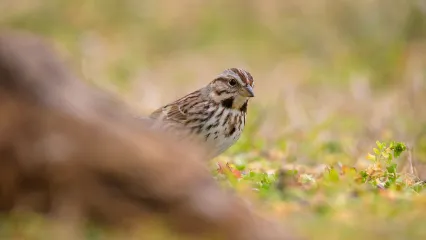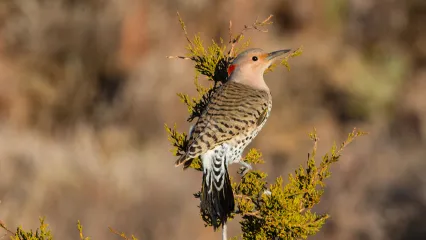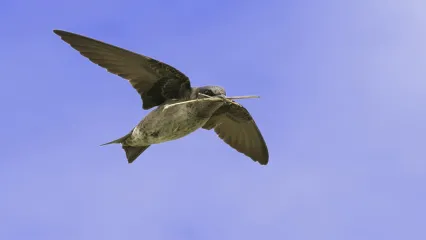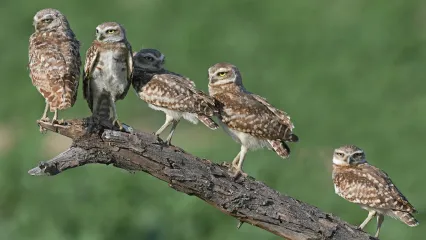
Description
An abundance of thick brown streaks on its sides and chest quickly distinguish it from most other backyard sparrows. Several streaks meet on the chest to form a distinct, dark spot that is thicker than the surrounding streaks. It has a relatively long, rounded tail and a gray or light tan eyebrow stripe. A dark brown stripe runs from the base of the bill along both sides of the throat. Most song sparrows in Oklahoma have medium brown streaks over a pale grayish-brown background. However, coloration may range from grayish to reddish brown. The numerous dark streaks on its chest and sides distinguish it from other sparrows that may visit winter bird feeders. Song sparrows are most similar to Lincoln’s sparrows , which is not common during the winter, has finer, black streaks and a buff background color in its chest and sides.
Size
Approximately 4.7 to 6.7 inches in length. Wingspan of 7.1 to 9.4 inches.
Habitat
Song sparrows are most often seen near water – usually cattail marshes and willow thickets. They may also be found in tall roadside grasses and weeds, plum thickets and forest edges. These birds may be found throughout the state from mid-October through late April.
Life Cycle
At bird feeders song sparrows eat millet, milo, and black-oil sunflower seeds. Away from feeders they eat small seeds and some insects.
How To Observe
Song sparrows are normally seen alone or in very small groups of less than five birds. They primarily feed on the ground, but will take seeds from platform-style feeders. They prefer to feed near the cover of shrubs or tall grasses.


